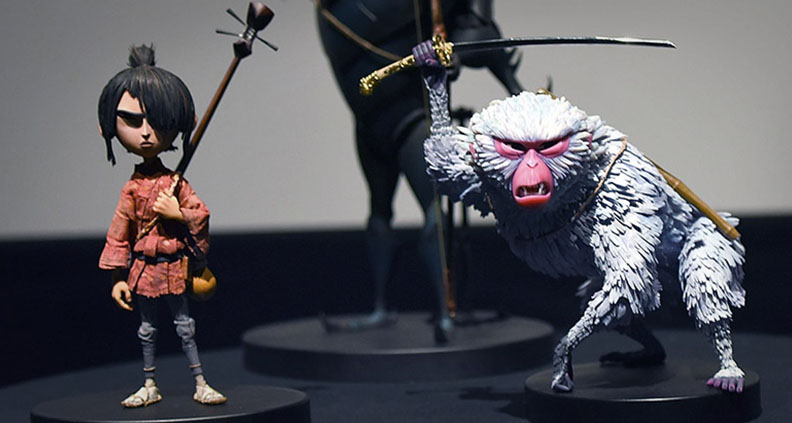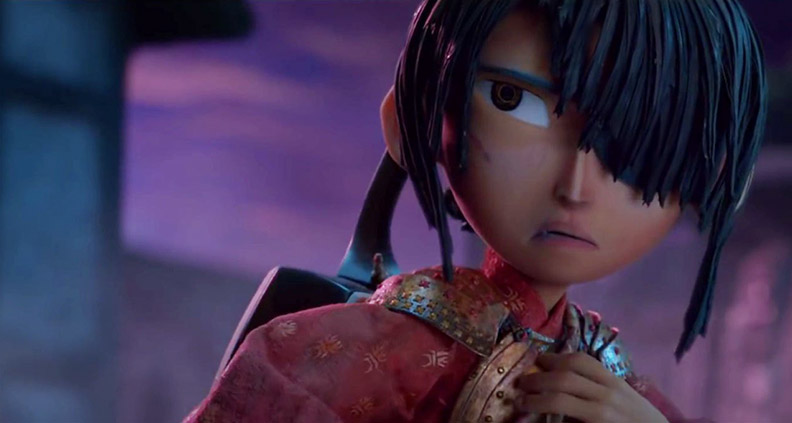ICYMI: Behind the Scenes with LAIKA Studio’s Stop-Motion Masterminds
Are you an animator? An aspiring one? Film Independent’s is currently accepting applications, through August 30, for the 2022 LAIKA Animation Fellowship, which provides a production grant to produce a stop-motion animated short film in Project Involve. Emerging filmmakers with a focus in animation and who come from diverse backgrounds and communities underrepresented in film and television are invited to apply today.
To help tout this incredible opportunity, we’re taking a look back at one of our favorite Directors Close-Up events of all time: our super-fun panel with LAIKA Studios about the production and release of their critically acclaimed 2016 film Kubo and the Two Strings, then currently nominated for an Oscar. A Versuib of this blog originally ran in 2017.

On most film shoots, capturing an average of just five or six seconds of useable footage per day would be serious cause for alarm. Not so for LAIKA Studios, for whom this scant total represents an enormously productive day at the office. After all, the Portland, OR-based studio is famous for its work in stop-motion— long regarded as perhaps the most maddeningly slow-moving and detail-oriented form of filmmaking ever conceived. But LAIKA’s dogged insistence at doing things their own way (and at their own pace) has resulted in some of the most unique and beloved animated features of the last 15 years.
For Kubo director Travis Knight (also LAIKA’s President and CEO), the nomination represents the end of a five-year-long production journey, one that inevitably wound its way through West LA’s Landmark Theaters on February 8 for the second night of Film Independent’s 2017 Directors Close-Up series. The panel, “Kubo and the Two Strings: Directing Animation” featured Knight as well as Kubo producer Arianne Sutner, Visual Effects Supervisor Steve Emerson, Rapid Prototyping Director Brian McLean and Animation Supervisor Brad Schiff; the panel was moderated by screenwriter (and LAIKA superfan) Jane Anderson.
https://www.youtube.com/watch?v=vex0gPFnBvM
For Knight, the transition to director’s chair was inevitable. “I always wanted to take that next step for myself creatively,” he said. But putting together Kubo—the Japanese-inflected saga of a young boy’s attempts to navigate his celestial birthright—proved challenging. “Physically, it’s pretty demanding,” Knight said of the stop-motion process. “But it’s mentally taxing as well. It’s this mathematical, mechanical thing, but it has to feel organic. Your brain is always working.”
Thankfully, LAIKA was already a leading innovator in the animation space, having won an award from the Academy’s scientific division in 2015 for its pioneering use of 3-D printing. McLean explained that thanks to rapid prototyping, LAIKA has been able to compile a database of 48 million possible facial expressions, attachable to their puppets’ faces via magnets. “I have, like, four,” joked Knight.
After pausing to show a clip from the film on the big screen, Anderson asked the obvious question: “Do you ever clean things up with CG?”
“Around [2012’s] ParaNorman, we started talking about ‘hybrid filmmaking,’” said Emerson, stating that CG enhancements make it possible for filmmakers to transcend the physical limitations of puppetry while still respecting the art of stop-motion. He added that for LAIKA, CG-enhanced visuals are always an extension of actual physical set elements that have been built to exist IRL.
https://www.youtube.com/watch?v=wrFmJdnMdjg
“We’re not purists,” said Knight. “If we have a cloud, it doesn’t make sense [for us] to make it out of cotton balls. It’s about finding the right tool for the job.”
He added that, despite animation’s ability to render the fantastical, it’s still important for animators to understand the basics of physics and biology. “If you’re going to stylize reality, you need to understand reality.”
With three of Kubo’s actual, on-camera puppets—Kubo, plus companions Monkey and Beetle— sitting on a nearby table, Anderson observed that in every tangible way, animators are themselves actors. “Do you feel the emotion [of the performance]?” she asked.
“Absolutely,” Knight answered. “In some ways you have to. These things [the puppets] are little vampires. They suck the life out of anyone who touches them.” He recalled how, when working on one particularly dour scene as an animator on ParaNorman (directed by Chris Butler and Sam Fell), he’d invariably return home at night depressed and out of sorts.
But for LAIKA animators, on-set angst is far more often the result of tricky production logistics—puppet actors frequently being as difficult to direct as their flesh-and-blood counterparts. The panel noted that it’s not uncommon at LAIKA’s expansive warehouse space to hear Schiff’s voice echoing in frustration from the far edges of the building, screaming at his noncompliant cast of miniatures.
As Emerson put it, “A lot of things can go wrong. Animators can bump into things, step into frame, block the light. We do a lot of cosmetic work on the puppets. There aren’t a lot of do-overs.”
“No do-overs” in this case means “no reshoots” and “no coverage,” with every detail of the story’s visual presentation meticulously mapped-out in a series of animatics and pre-visualizations in pre-production, because as Sutner joked, “Happy accidents require a lot of preparation.”
“Unless it’s egregious, it’s going in the movie,” said Knight of Kubo’s ruthless shooting ratio, adding, “it’s an insane way to work.”

Sutner described some of the challenges of managing a stop-motion feature. “What you see onscreen is being created by a surprisingly lean team,” she said, stating that LAIKA’s general workflow and financial structure are vastly different than what would be the case ON a standard live action feature. For her, a point of pride is “the unusual mix in the way we [LAIKA] collaborate”—a multi-faceted process spread out over many, many years.
But despite the maddening production process, the panel agreed that the results more than justified any pain and frustration, still marveling at how well the film holds up on the big screen. Said Sutner: “At LAIKA we want to make sure we incorporate that into all of our films—that beauty and atmosphere.”
To learn about Film Independent’s LAIKA Animation Fellowship—granting $10,000 to an animator participating in Project Involve—just click here.
Film Independent promotes unique independent voices, providing a wide variety of resources to help filmmakers create and advance new work. To support our efforts with a donation, please click here and become a Member of Film Independent here.
Follow Film Independent…
(Header: LAIKA’s Coraline)